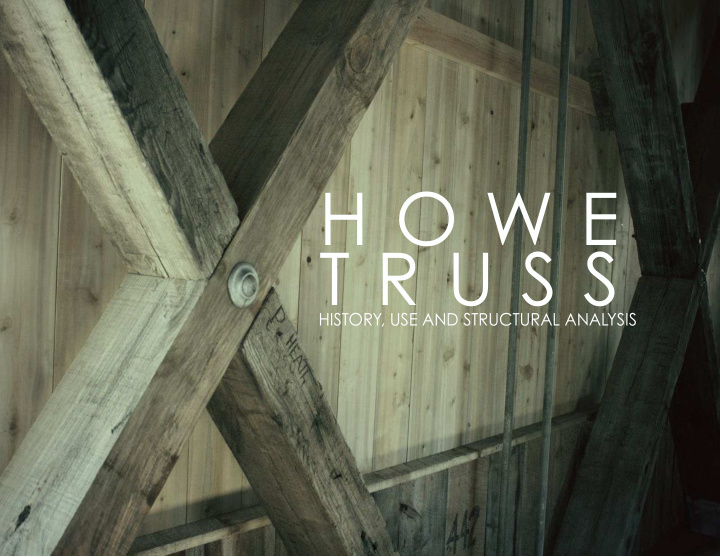



H O W E T R U S S HISTORY, USE AND STRUCTURAL ANALYSIS
143 bridges are supported by the Howe Truss Secondary only to the Burr Truss in populari- H I S T O R Y ty in the U.S. 15% of all covered bridges are Howe Truss configurations. Originally patented by William Howe with variations designed my Harris, Stone and Thomas Pratt. Designs were based on stress anal- ysis which was a first amongst early truss- es. Detailed diagrams accompanied Howe’s patents. Its configuration was easy to as- semble and had readily pre- fabricated components, leading to its success.
1st patent 2nd patent 3rd patent All-steel varia- William Howe William Howe William Howe tions on Howe and -------------------------- -------------------------- -------------------------- An all-timber Incorporated Timber arch Pratt’s Trusses metal compo- became common- variation of the first on the side similar to place. Howe Truss nents into the same Burr Truss design 1840 1850 Harris & Stone Pratt Truss -------------------------------------- --------------------------------- Design similar modifications of Parallel chords and vertical Howe’s Timber Truss struts in wood and ‘X’ in wrought iron diagonals
COMPRESSION & TENSION Cast Iron = compression members Wrought Iron = tension members I n a Howe truss, the vertical supports hold the tensile forces , while the diagonal supports dis- tribute the compression forces . This configuration of diagonals and verticals allow the Howe truss to span a greater distance than other trusses. In current practice 6.1m (20ft) to 61 m (200ft)
TRUSS CONFIGURATIONS CONFIGURATIONS Flat Pitched http://www.diracdelta.co.uk/science/source/t/r/truss/source.html#.Umadz_nrxPc Beam http://www.coveredbridgesite.com/ny/truss.html Scissors http://www.northlandtrusssystems.com/roof_trusses.html
Railroad Bridges TYPICAL USES Roof Trusses Covered Bridges
GENERAL CONSTRUCTION
Joints for the Steel Truss STEEL JOINTS
P I T C H E D M O D E L
B E A M M O D E L
Recommend
More recommend